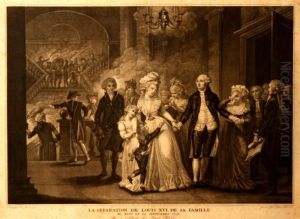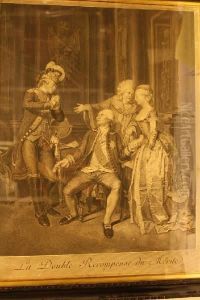Jean Jacques I Avril Paintings
Jean Jacques Avril the Elder, also known as Jean-Jacques Avril l'Aîné, was a French engraver born in Paris in 1744. He came from a family with artistic roots, his father being the engraver François Avril. Jean Jacques Avril continued the family tradition, becoming known for his expertise in engraving, which was a highly valued skill in the production of illustrations for books and artworks during the 18th century.
Avril's work exemplified the Rococo style, which was prominent during his early career, and later transitioned into the more neoclassical tendencies that gained popularity towards the end of the 18th century. His engravings often depicted historical and mythological scenes, as well as portraits and landscapes. He was not only skilled in traditional engraving techniques but also in the emerging methods of etching and stipple engraving, which allowed for a greater range of tonal variation and subtlety in prints.
During his lifetime, Avril witnessed and adapted to significant changes in the French art world, including the shift in tastes and the political upheavals of the French Revolution. Despite the turmoil of the times, he managed to maintain a successful career. He trained his son, Jean Jacques II Avril, who also became an engraver, ensuring that the family's artistic legacy would continue into the next generation.
Jean Jacques Avril the Elder passed away in 1831. Although he may not be as widely recognized as some of his contemporaries, his contributions to the art of engraving have been appreciated by connoisseurs and collectors of French 18th-century prints. His works can be found in the collections of various museums and libraries, preserving the artistry of the period for future generations to study and enjoy.

